Microsoft's Open-Source ASP.NET MVC Web Development Framework provides a Model View Controller architecture. ASP.NET MVC is an alternative to ASP.net web forms for creating web applications. It's a piece of the .Net framework used to build, distribute, and run programs on the cloud.
Have a peek below to find the answers to all the Technical ASP.NET MVC Interview Questions you might possibly have. To make it easier to navigate, we have divided all of the interviews into different categories
Top 10 ASP.NET MVC Frequently Asked Questions
- State the Various Controller action ways to return Types.
- What Benefits does MVC Offer?
- What are the MVC model's Shortcomings?
- What are the Procedures for carrying out an MVC project?
- How may Ajax be used in MVC?
- What kinds of Outcomes are there in MVC?
- What File formats do razor Views Support?
- What Characteristics does MVC have?
- How does Spring's MVC Work?
- What does AngularJS's MVC mean?
ASP.NET MVC Interview Questions For Freshers
1. What is MVC?
An architecture based on software is a paradigm for creating web apps is called MVC. It is controlled by certain items, They are
- Model
- View
- Controller
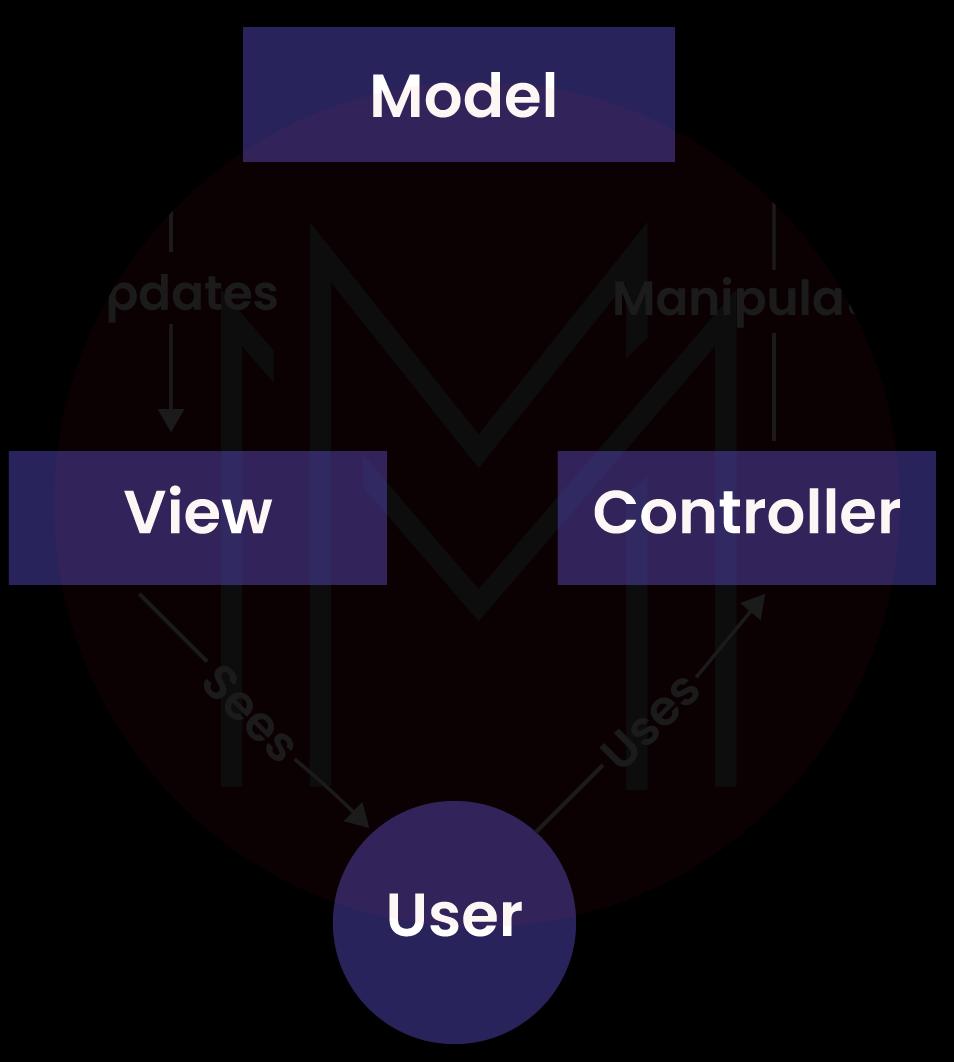
| If you want to enrich your career and become a professional in ASP.NET, then enroll in "ASP.NET Training" - This course will help you to achieve excellence in this domain. |
2. What does Model-View-Controller Stand for in MVC Application?
An MVC model uses
- Model: It describes the data domain for the application. In simpler form, a model contains the business logic that controls how an application manages data.
- View: It symbolizes the consumers through which final consumers interact. In essence, View contains all of the consumer logic.
- Controller: The controller is the component that responds to consumer needs. The relevant controller responds to user activities inside the model and selects a template to display that shows the consumer. The controller houses the logic for user input.
3. State the Various Controller action ways to return Types
The various return Types for a Control action method are as follows
- Browse Result
- Redirect
- JavaScript
- Content-based result
- JSON result
4. What Sets adding connections to an Application developed apart from adding routes to a Web form Application?
The MapPageRoute() method of the RouteCollection class is used to add routes to a web form project, whereas the MapRoute() method is used to add connections to an MVC application.
5. Describe the Two Primary Ways that a path can be constrained.
There are Two Ways to impose restrictions on a path
- Regular expressions are used.
- Utilize a piece of code that implements the IRouteConstraint Interface.
6. What Benefits does MVC Offer?
- MVC divides the assignment into distinct segments that are simpler for developers to develop and easier to amend or modify, which lowers the project's maintaining and developing costs.
- MVC improves the organization of your project.
- It shows a distinct division between presentation and business logic.
- Every MVC item performs a different function.
- The development proceeds concurrently.
- Simple to maintain and manage
- Every class and object exists independently of one another.
7. What the Controller's "beforeFilter()," "beforeRender," and "afterFilter" Functions Perform?
- beforeFilter(): Every operation in the controller is preceded by this function. Checking for an ongoing event or looking through user rights should be done here.
- beforeRender(): This method is used to render the view before the controller action logic. Although rarely frequently used, this function can be necessary if render() is manually called before the completion of a specific operation.
- afterFilter(): After each controller operation and when rendering is complete, the function afterFilter() is called. It runs as the final controller method.
8. What Functions do Presentation, Abstract, and Control perform in MVC?
The Functions of Presentation, Abstraction, and Control in MVC are as follows
- Presentation: It is the application's graphic illustration of a certain abstraction.
- Abstraction: The application's business domain functionality.
- Control: It is an element that coordinates with other controls in the system and maintains consistency between the abstractions used by the system and how they are presented to the user.
9. What are the MVC model's Shortcomings?
Here are some significant issues with the MVC model
- The modeling pattern is somewhat intricate.
- Access to data is inefficient.
- MVC is challenging to utilize with a contemporary user interface.
- Multiple programmers are required for parallel development.
- Knowledge of multiple technologies is necessary.
10. What Function does "ActionFilters" Serve in MVC?
As an MVC action is being executed or is being executed, "ActionFilters" assist you in executing logic.
ASP.NET MVC Interview Questions For Experienced
11. What are the Procedures for carrying out an MVC project?
An MVC Project's execution involves the following steps
- Obtain the initial application request
- Execute routing
- MVC request handler creation
- Make a controller and run it.
- Call to action
- Execution Outcome
12. What are the Three Segments and routing?
You can decide on a Website address and map the URL to the Controller with the aid of routing. The following three segments are crucial for routing
- ControllerName
- ActionMethodName
- Parameter
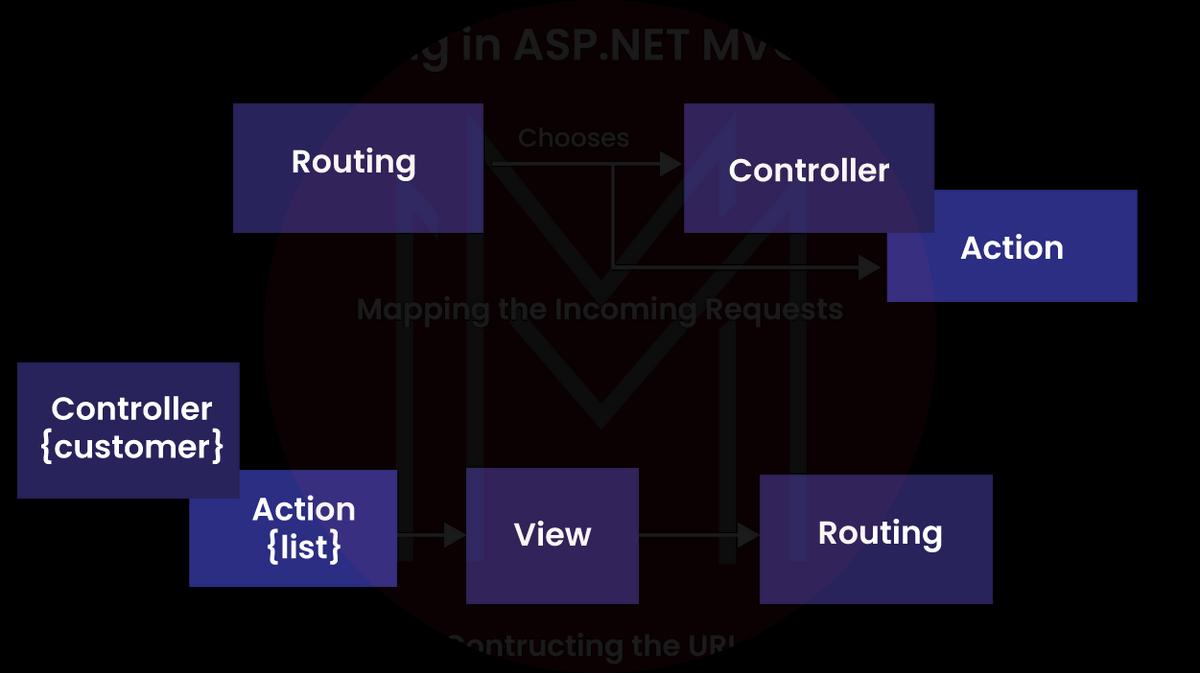
13. How does the MVC Pattern handle routing?
The recorded paths in the application are collected into a set of routes known as RouteCollection. The paths in this library are recorded through the RegisterRoutes method. A route specifies a handler to run if a request matches a specific pattern of URLs. The route name is the initial argument to the MapRoute method. The pattern that the URL matches will be the second parameter. If the placeholder values are unknown, the third parameter can be their default values.
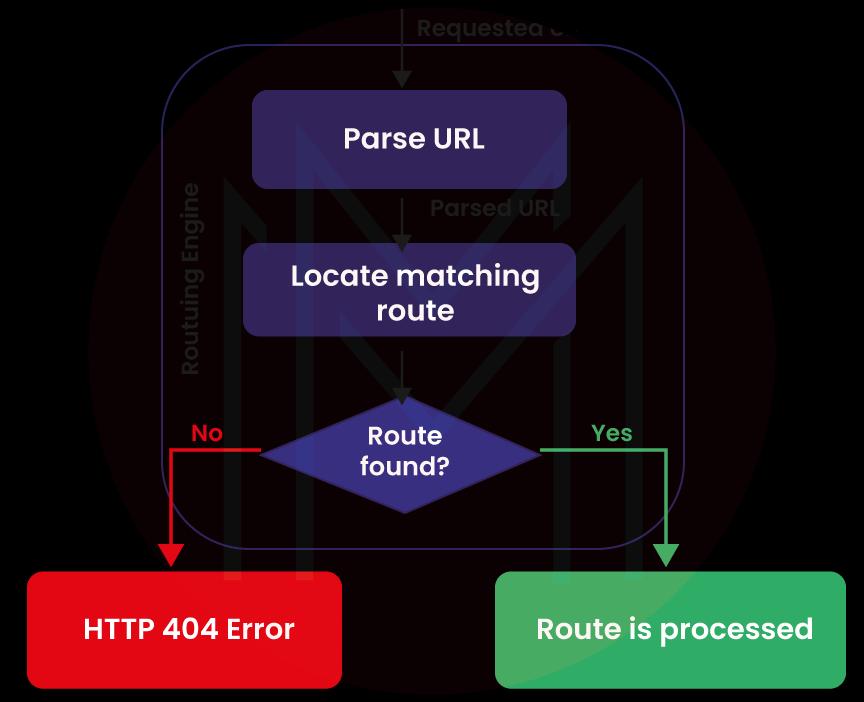
14. How does using a Hyperlink let you move between views?
By using the "ActionLink" method, as displayed in the code below. The code below will create a straightforward URL that aids in accessing the "Home" controller and launching the "GotoHome" action.
Code Collapse / Copy:
<%= Html.ActionLink("Home", "Gotohome") %>15. What Distinguishes View data, Temp data, and Display Bag?
- Temporary data: Maintaining data is helpful while switching from one computer to another.
- View data: Maintaining data when switching from the controller to the view is helpful.
- View bag: A dynamic wrapper for view data
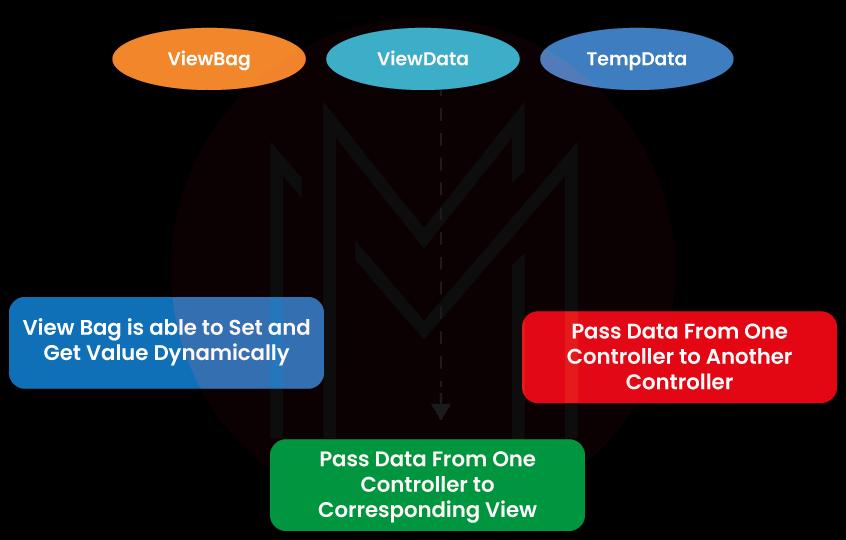
16. What is an Incomplete View in MVC?
In MVC, a partial view only displays a fraction of the view content. It aids in minimizing code duplication. The partial view enables the presentation of a view inside the parent view, to put it simply.
17. How may Ajax be used in MVC?
There are two techniques to integrate Ajax with MVC.
- JQuery
- Ajax libraries
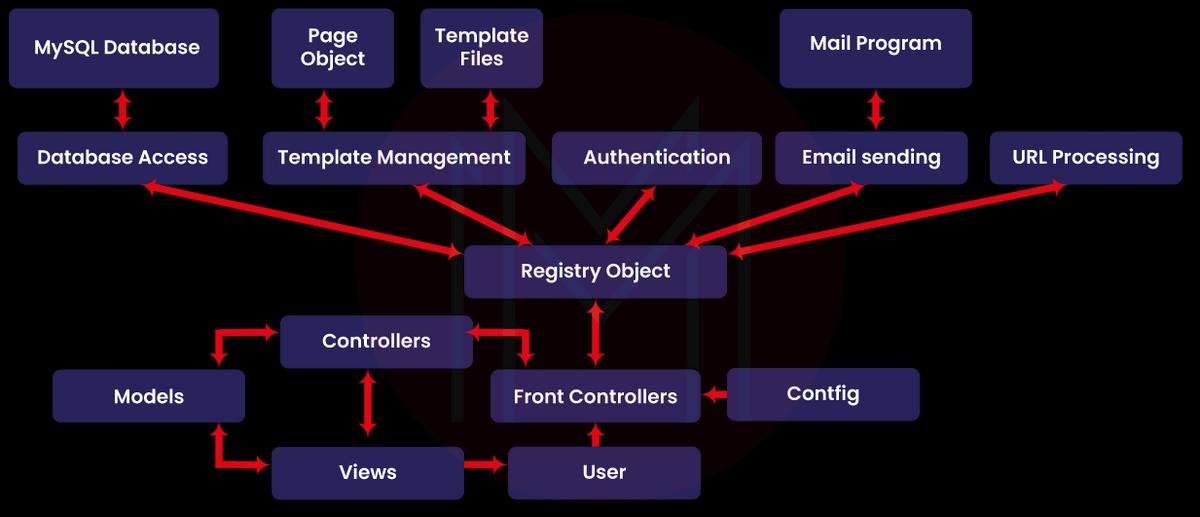
18. What distinguishes "ActionResult" from "ViewResult"?
While "ViewResult" is a class deriving from "AbstractResult," "ActionResult" is an abstract class. There are several "ActionResult" descendant classes, including "JsonResult," "FileStreamResult," and "ViewResult." If you are dynamically generating different types of views, "ActionResult" is the ideal choice.
19. In MVC, how can you return the output in JSON format?
You can use the "JSONRESULT" class in MVC to return the result in JSON format.
| Related Article: JSON Interview Questions |
20. What kinds of Outcomes are there in MVC?
There are Twelve different sorts of outcomes in MVC, of which the "ActionResult" class is the primary group and the other eleven are sub-types:
- View Result
- PartialView
- EmptyResult
- RedirectResult
- RedirectToRouteResult
- JsonResult
- JavaScript Result
- ContentResult
- FileContent Result
- FileStreamResult
- FilePathResult
Advanced ASP.NET MVC Interview Questions
21. What Function does NonActionAttribute Serve?
If you want to override the default action method that is applied to all preferred channels of a controller class, you must provide the common method with the NonActionAttribute.
22. What Purpose does the standard route resource.axd/*pathinfo serve?
Requests for web resource files like Webresource.axd or ScriptResource.axd cannot be delivered to the controller using the default route.
23. If numerous filters are used, What is the sequence in which they are applied?
The filters would be in this order
- Authentication barriers
- Filtering for action
- Response limiting
- Filters for exceptions
24. What File formats do razor Views Support?
The file extensions for razor views are
- If the programming language is C#, the extension is.cshtml
- If it is VB, the extension is.vbhtml.
25. Which are the two primary ways that a route can be constrained?
There are two ways to put restrictions on the route
- Regulated expressions
- Utilizing an IRouteConstraint interface-implementing object
26. What are Two Situations when routing is either not used or not necessary?
There are two situations where sequencing is not necessary
- When an actual file matching the URL pattern is discovered
- When a URL pattern's routing is turned off
27. What Characteristics does MVC have?
These are MVC's Features
- Effortless and simple testability. The framework is highly tested, extensible, and pluggable.
- Provides complete control of your HTML and URLs
- Utilizes pre-existing functionalities offered by JSP, Django, ASP.NET, etc.
- Model, View, and Controller all exhibit distinct logical separation. division of application tasks using business, input, and Ul logic.
- URL Routing for URLs That Are SEO-Friendly Effective URL mapping for searchable and understandable URLs.
- Assistance with test-driven development (TDD).
28. How may MVC Architecture be used in JSP?
The application of MVC model in JSP is demonstrated by the example below:
- We will use a form with the variables "email" and "password" as an example for our view layer.
- When a user enters their password and email address and clicks "submit," the action is transferred to the mvc servlet, which receives the email address and password.
- The controller layer for this mvc servlet is. The request is delivered to the bean instance, which serves as a model layer in mvc servlet.
- The email address and password are entered through into bean and saved for later use.
- The value is retrieved from the bean and displayed on the view layer.
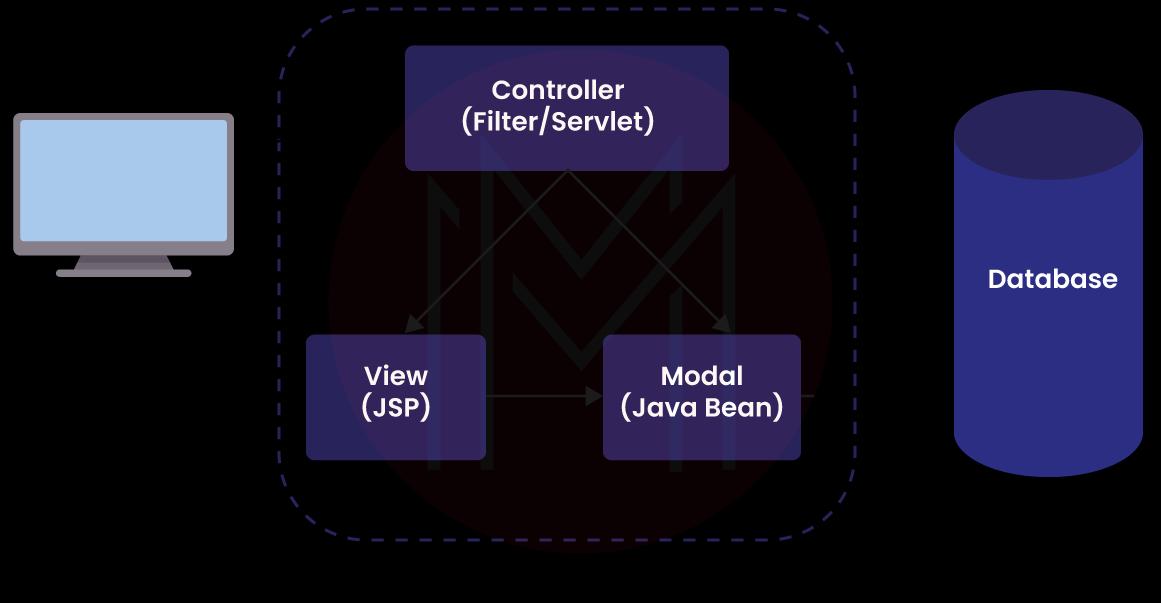
29. How does Spring's MVC Work?
Here is how Spring's MVC Operates
- DispatcherServlet receives a request.
- The DispatcherServlet then speaks with HandlerMapping after that. Additionally, the controller linked to that particular request is revoked.
- The DispatcherServlet returns a ModelAndView object once the Controller processes the demand by invoking the service functions.
- To determine the correct view to activate, the view name is provided to a ViewResolver.
- After then, View receives DispatcherServlet in order to render the outcome.
- The View renders and provides the user the results using the model data.
| Related Article: Spring Boot vs Spring MVC |
30. What are the Key Considerations when developing an MVC Application?
While building an MVC application, keep the following in mind
- You must keep in mind that ASP.Net MVC is not a replacement for applications built on ASP.Net web forms.
- Based on the characteristics offered by ASP.net MVC and the application requirements, the MVC app development strategy must be chosen to meet the unique development requirements.
- In comparison to online forms-based apps, the ASP.NET MVC application development process is more sophisticated.
- The division of application tasks always results in greater application maintainability.
31. How does CodeIgniter display something?
To exhibit something within CodeIgniter, use the following code
<?=$title?>
As opposed to
<?php
echo $title;
?>Control structures are usually written as follows
<?php foreach ($customers as $customer): ?>
<li>
<p><?=$customer->first_name?><p>
</li>
<?php endforeach; ?>32. Can you build a web application using both MVC and web forms?
Yes. To construct a software tool, you must include the MVC assembly references shown below in the modern web application.
System.Web.Mvc
System.Web.Razor
System.ComponentModel.DataAnnotations33. What distinguishes WebAPI from MVC most Significantly?
The key distinction among MVC and WebAPI is as follows
- For creating apps with a user interface, MVC framework is employed. Perspectives can be employed to create a user interface for that.
- It is possible to create HTTP services using WebAPI. To retrieve the data, additional apps can also employ WebAPI techniques.
34. What does AngularJS's MVC mean?
Angular.js uses the MVC architecture, and its diagram is given below.
- The Controller represents the layer with the business logic. The functions that are stored inside the controller are activated by user events. The controller includes the user events.
- Views represent the presentation layer that is offered to end users.
- Models represent your data. Your model's data could be as basic as a set of simple declarations. If you are running a student application, for instance, your data model might only contain the student id and the student's name. An organized data model can also make it difficult. If you are keeping up with an application for car ownership
35. Why do we Use PHP MVC Framework?
Use the PHP MVC Framework since it makes it easier to work with complicated technologies by
- Concealing every intricate implementation detail
- Supplying common techniques that we can employ to create our apps.
- An increase in development productivity because the fundamental implementation of tasks like the database connection and cleaning user input has already been completed in part.
- Adherence to coding guidelines for professionals
36. What is the ASP.NET MVC Razor Concept Explained?
The idea of "view engines," which are pluggable modules which integrate multiple template syntax options, has always been supported by ASP.NET MVC.
The.aspx/.ascx/. the "default" view engine also uses master file templates used by ASP.NET WebForms in ASP.NET MVC. Spart & Nhaml are two other prominent ASP.NET MVC view engines. The fresh perspective provided by MVC 3 is called Razor.
37. Which Filters are available for Final Execution?
We can use filters referred to as "Exceptional Filters" at the conclusion.
38. What Potential roadblocks might there be?
A regular expression serves as the first restriction on a route, while an entity that satisfies the IRouteConstraint interface serves as the second restriction.
39. Why was the introduction of WebAPI Technology necessary?
Earlier, HTTP was the protocol of choice for all kinds of clients. But as time went on, clients became more diverse. High HTTP consumption was required due to the use of JavaScript, Windows apps, and even mobile. The REST method was consequently suggested. REST principles were used by WebAPI technology to deliver the information through HTTP.
40. Which Stages are involved in creating the request Object?
- First, fill in the route.
- Find the route in step two.
- Making a request context is step three.
- Making a controller instance is the fourth step.
Most Common ASP.NET MVC FAQs
1. What are the Four Major Components of MVC?
Routes, models, views, and controllers comprise an application's four main parts.
2. Why is ASP.NET MVC Used?
By splitting an application into the model, the view, and the controller, makes it easier to deal with complexity. It doesn't use view states or forms that run on the server. Because of this, the MVC framework is perfect for developers who want to have full control over how an app works.
3. How many layers are there in MVC?
Model, View, and Controller are its three primary layers.
4. Is ASP.NET MVC Backend or Frontend?
The backend is an ASP.NET Core or ASP.NET MVC application (server side). The client (frontend) application consists of all required styles, scripts, and HTML templates.
5. What Language is ASP.NET MVC?
C#, .NET and VB are the languages used by ASP.NET MVC.
6. Is ASP.NET MVC Open Source?
Microsoft made ASP.NET, which is an open-source web framework, so that modern web apps and services can be built with .NET.
7. Can we use Web API in MVC?
Web API helps make it possible to build HTTP services that can communicate with browsers, devices, and tablets. MVC can be used with ASP.NET Web API to make any kind of app. A web API can help you build AJAX-based ASP.NET apps.
| Related Article: Web API Interview Questions |
8. Is MVC a REST API?
Yes, although MVC follows a more relaxed style of architecture than REST, it can be easily modified to suit your needs.
9. What is HttpClient in MVC?
The HttpClient class gives you a base class that you can use to send HTTP requests and get HTTP responses. HttpClient sends and gets information from the local IIS server's Web API URL.
10. Why is ViewModel used in MVC?
ViewModel is a class in ASP.NET MVC that holds the fields that are shown in the strongly-typed view. It is used to send data from the controller to the strongly-typed view.
ASP.NET MVC Interview Preparation Tips
- Make sure that your answers are as clear as possible during the Interview.
- Find out as much as you can about the organization. Make sure your answers fit what the company wants.
- If you don't understand something during interview time, make it clear that you want to work on an idea you don't know much about or haven't worked on before.
- Try to answer every question in a simple and detailed manner. This shows the interviewer that you know a lot about a certain idea.
- Include at least one example from your past that shows how you met the standards of the roles and responsibilities that the company posts. You will be ready with an example when the interviewer asks about the criterion.
- Be formal with the interview and wear a decent interview dress.
- Talk with the interviewer politely, and use good language.
- Using these ASP.NET MVC interview questions will help the candidates to answer each question perfectly.
Conclusion
Examine our list of ASP.NET MVC Interview Questions and Answers, then practice them on your own to make your preparation process easier. We are confident that you will be prepared for the interview if you have improved your knowledge by following these interview questions. And if you want to learn even more, you can sign up for ASP. NET MVC Training courses to increase your knowledge which leads to grabbing your dream job.
 On-Job Support Service
On-Job Support Service
Online Work Support for your on-job roles.

Our work-support plans provide precise options as per your project tasks. Whether you are a newbie or an experienced professional seeking assistance in completing project tasks, we are here with the following plans to meet your custom needs:
- Pay Per Hour
- Pay Per Week
- Monthly
| Name | Dates | |
|---|---|---|
| ASP.NET Training | Dec 27 to Jan 11 | View Details |
| ASP.NET Training | Dec 30 to Jan 14 | View Details |
| ASP.NET Training | Jan 03 to Jan 18 | View Details |
| ASP.NET Training | Jan 06 to Jan 21 | View Details |

Madhuri is a Senior Content Creator at MindMajix. She has written about a range of different topics on various technologies, which include, Splunk, Tensorflow, Selenium, and CEH. She spends most of her time researching on technology, and startups. Connect with her via LinkedIn and Twitter .
















